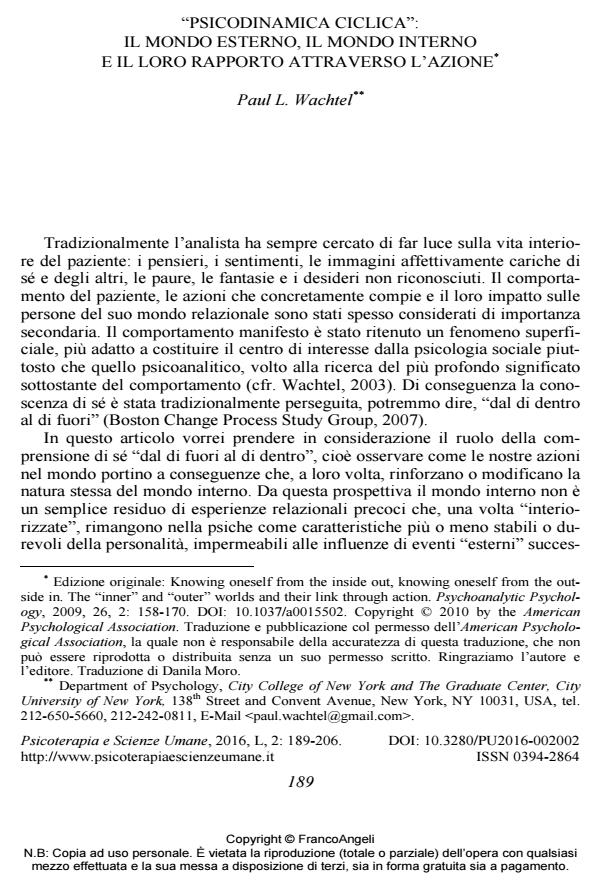"Psicodinamica ciclica": il mondo esterno, il mondo interno e il loro rapporto attraverso l’azione
Titolo Rivista PSICOTERAPIA E SCIENZE UMANE
Autori/Curatori Paul L. Wachtel
Anno di pubblicazione 2016 Fascicolo 2016/2
Lingua Italiano Numero pagine 18 P. 189-206 Dimensione file 90 KB
DOI 10.3280/PU2016-002002
Il DOI è il codice a barre della proprietà intellettuale: per saperne di più
clicca qui
Qui sotto puoi vedere in anteprima la prima pagina di questo articolo.
Se questo articolo ti interessa, lo puoi acquistare (e scaricare in formato pdf) seguendo le facili indicazioni per acquistare il download credit. Acquista Download Credits per scaricare questo Articolo in formato PDF

FrancoAngeli è membro della Publishers International Linking Association, Inc (PILA)associazione indipendente e non profit per facilitare (attraverso i servizi tecnologici implementati da CrossRef.org) l’accesso degli studiosi ai contenuti digitali nelle pubblicazioni professionali e scientifiche
Viene illustrato come il "mondo interno" dei desideri, delle fantasie, degli affetti e delle rappresentazioni del Sé e dell’oggetto e il "mondo esterno" del comportamento manifesto e della realtà sociale si co-creino continuamente. Sulla base della presentazione di due casi clinici e di una discussione teorica, vengono mostrati i limiti di una concezione lineare di superficie e profondità, basata sul modello archeologico. In alternativa a questa concezione, si dimostra come vita quotidiana e organizzazione soggettiva conscia e inconscia si plasmino e si sostengano a vicenda e, nel processo, preservino gli stabili pattern di personalità dell’individuo.
Parole chiave:Teoria relazionale, psicoanalisi, azione, psicodinamica ciclica, mondo interno e mondo esterno
- Le risposte. Psicoanalisi e psicoterapia: teorie, pratiche e contesti multipli Paul L. Wachtel, in PSICOTERAPIA E SCIENZE UMANE 3/2016 pp.617
DOI: 10.3280/PU2016-003060
Paul L. Wachtel, "Psicodinamica ciclica": il mondo esterno, il mondo interno e il loro rapporto attraverso l’azione in "PSICOTERAPIA E SCIENZE UMANE" 2/2016, pp 189-206, DOI: 10.3280/PU2016-002002